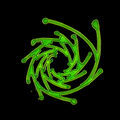Template:Selected anniversaries/October 4: Difference between revisions
No edit summary |
No edit summary |
||
| Line 29: | Line 29: | ||
||1892: Hermann Glauert born ... aerodynamicist and author. His book '''The Elements of Aerofoil and Airscrew Theory''' was the single most important instrument for spreading airfoil and wing theory around the English speaking world. Pic search yes: https://www.google.com/search?q=Hermann+Glauert&oq=Hermann+Glauert | ||1892: Hermann Glauert born ... aerodynamicist and author. His book '''The Elements of Aerofoil and Airscrew Theory''' was the single most important instrument for spreading airfoil and wing theory around the English speaking world. Pic search yes: https://www.google.com/search?q=Hermann+Glauert&oq=Hermann+Glauert | ||
||1895: Richard Sorge born ... journalist and spy. | ||1895: Richard Sorge born ... journalist and spy. Pic search: https://www.google.com/search?q=max+bergmann+biochemist | ||
||1900: Nikolai Vasilyevich Smirnov born ... mathematician who contributed to probability theory and statistics. Smirnov is known, with Sergey Korolev, for the Korolev-Smirnov test. Pic search yes: https://www.google.com/search?q=nikolai+smirnov+mathematician | ||1900: Nikolai Vasilyevich Smirnov born ... mathematician who contributed to probability theory and statistics. Smirnov is known, with Sergey Korolev, for the Korolev-Smirnov test. Pic search yes: https://www.google.com/search?q=nikolai+smirnov+mathematician | ||
| Line 43: | Line 43: | ||
||1909: Eugene George Rochow born ... inorganic chemist. Rochow worked on organosilicon chemistry; in the 1940s, he described the direct process, also known as the Rochow process or Müller-Rochow process. Pic. | ||1909: Eugene George Rochow born ... inorganic chemist. Rochow worked on organosilicon chemistry; in the 1940s, he described the direct process, also known as the Rochow process or Müller-Rochow process. Pic. | ||
||1916: Vitaly Ginzburg born ... physicist and academic, Nobel Prize laureate. | ||1916: Vitaly Ginzburg born ... physicist and academic, Nobel Prize laureate. Pic. | ||
||1918: Kenichi Fukui born ... chemist and academic, Nobel Prize laureate. | ||1918: Kenichi Fukui born ... chemist and academic, Nobel Prize laureate. Pic. | ||
||1926: Kazuhiko Nishijima born ... physicist who made significant contributions to particle physics. Pic. | ||1926: Kazuhiko Nishijima born ... physicist who made significant contributions to particle physics. Pic. | ||
Revision as of 18:25, 5 November 2019
1903: Physicist, inventor, and academic John Vincent Atanasoff born. He will invent the Atanasoff–Berry computer, the first electronic digital computer.
1946: Mathematician, statistician, and Gnomon algorithm theorist Harald Cramér visits the Nested Radical coffeehouse in New Minneapolis, Canada, where he gives an impromptu lecture on the mathematical definition of probability, "from which its fundamental properties and the classical theorems are deduced by purely mathematical operations."
1947: Physicist and academic Max Planck dies. He made many contributions to theoretical physics, and earned fame as the originator of quantum theory.
1957: Clock Head 2 stops math criminals from interfering with the launch of Sputnik 1.
1957: Space Race: Launch of Sputnik 1, the first artificial satellite to orbit the Earth.
2006: Steganographic analysis of the Superimposed Fraunhofer stamp reveals "seven hundred to eight hundred kilobytes" of previously unknown Gnomon algorithm functions related to color. These functions will quickly find application in the detection and prevention of crimes against light.
2018: Green Spiral 5 voted Picture of the Day by the citizens of New Minneapolis, Canada.






